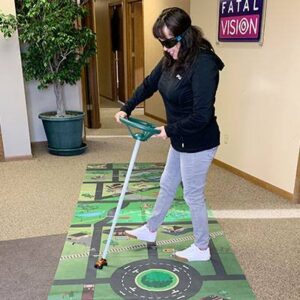Learn how to create an effective in-school or community education program from the ground up.
 According to estimates from the Centers for Disease Control and Prevention, around 3,100 people are killed, and hundreds of thousands more are injured yearly in the United States due to car crashes involving distracted drivers. Add in research from the National Safety Council, which estimates that one in four car crashes stem from cell phone use, and it’s clear that texting and driving prevention programs are more vital than ever.
According to estimates from the Centers for Disease Control and Prevention, around 3,100 people are killed, and hundreds of thousands more are injured yearly in the United States due to car crashes involving distracted drivers. Add in research from the National Safety Council, which estimates that one in four car crashes stem from cell phone use, and it’s clear that texting and driving prevention programs are more vital than ever.
As concerned educators, parents, and law enforcement professionals, we need to prioritize creating curriculums that effectively teach students, especially young drivers, about the dangers of texting and driving.
If you’re just getting started teaching about texting and driving or are creating a new curriculum from scratch, this article will answer the pressing questions you likely have about creating a texting and driving prevention program that’s engaging and effective.
How can I get students more engaged?
Keeping students engaged is critical to delivering an effective texting and driving prevention program. Fortunately, there are several ways to keep the curriculum engaging and fun. Here are some ideas:
- Use interactive presentations and videos to showcase the dangers of texting and driving.
- Collaborate with students to create role-plays or skits that demonstrate the dangers of texting and driving.
- Host guest speakers whose lives have been impacted by crashes caused by texting while driving.
- Provide students with hands-on learning experiences using tools like the Fatal Vision® Drowsy and Distracted goggles, accompanying activities, and Fatal Vision’s Roadster Pedal Kart and SIDNE driving simulators.
To learn more about Fatal Vision’s distracted driving education products, check out this recent blog post from our team.
How can I incorporate real-world statistics and stories without resorting to scare tactics?
It’s crucial to provide students with actual statistics and stories to help them understand the danger of texting while driving, but you don’t want to resort to scare tactics.
Some ways to incorporate real-world statistics and stories, without relying too heavily on “scaring” your students, include:
- Using data visualization tools to showcase statistics using graphs, infographics, or other visuals.
- Sharing recent, local news articles about crashes that involved texting and driving.
- Interviewing professionals such as law enforcement officers or school counselors who have firsthand experience with the dangers of texting and driving.
- Participating in state or local awareness campaigns that can help drive these statistics home for your students.
How can I incorporate participant feedback into my course?
Participants’ feedback offers valuable insights for educators to improve their texting and driving prevention programs. You can incorporate participants’ feedback by:
- Collecting feedback through surveys, polls, or other interactive tools.
- Conducting focus groups with participants to understand their thoughts and opinions.
- Using data analysis tools to examine participants’ responses and identify patterns or trends.
- Reviewing feedback to make necessary adjustments to the curriculum.
How can I help get through to new drivers who are overconfident in their multitasking abilities?
Arguably, no group is more prone to texting while driving than young drivers. They can be overconfident in their multitasking abilities and tend to underestimate the dangers of texting behind the wheel.
If you’re finding this to be true with the cohort of students in your program, this is a perfect opportunity to incorporate Fatal Vision’s Roadster Pedal Kart and SIDNE driving simulators. These educational tools, while entertaining, provide a safe and controlled way to physically illustrate to students how even taking their eyes off of the road for just a moment can greatly impact their reaction times and driving skills.
The dangers of distracted driving are real, and we need to prioritize educating young drivers about the risks of texting while driving. A well-designed texting and driving prevention program can help promote safer driving habits among young drivers, ultimately saving lives.
For more information about distracted driving education and prevention, check out these additional posts from the Fatal Vision blog. If you have any questions about the products mentioned in this article and how you can incorporate them into your texting and driving prevention program, contact our team today!




 According to estimates from the
According to estimates from the 